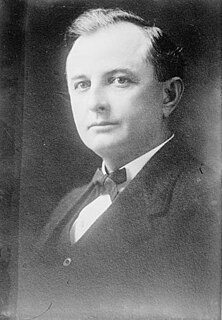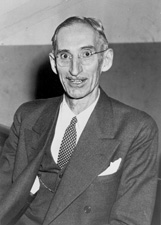| |||||||||||||||||||||
| |||||||||||||||||||||
| |||||||||||||||||||||
The 1920 Minnesota lieutenant gubernatorial election took place on November 2, 1920. Republican Party of Minnesota candidate Louis L. Collins defeated Independent challenger George H. Mallon and Minnesota Democratic Party candidate James P. McDonnell.

The Republican Party of Minnesota is a conservative political party in the U.S. state of Minnesota. It is affiliated with the United States Republican Party.
Louis Loren Collins was the 23rd Lieutenant Governor of Minnesota. Born in St. Cloud, Minnesota and became Lieutenant Governor under Governor J. A. O. Preus from January 4, 1921 – January 6, 1925. He died in 1950 in St. Cloud, Minnesota.
An independent or nonpartisan politician is an individual politician not affiliated with any political party. There are numerous reasons why someone may stand for office as an independent.
Captain Mallon was the nominee of the young Minnesota Farmer-Labor Party. However, the Farmer-Labor nominees for Governor and Lieutenant Governor in the general election of 1920 were unable to use the Farmer-Labor party designation and ran as Independents instead.

The Governor of Minnesota is the chief executive of the U.S. state of Minnesota, leading the state's executive branch. Forty people have been governor of Minnesota, though historically there were also three governors of Minnesota Territory. Alexander Ramsey, the first territorial governor, also served as state governor several years later. State governors are elected to office by popular vote, but territorial governors were appointed to the office by the United States president. The current governor of Minnesota is Tim Walz of the Democratic-Farmer-Labor Party (DFL).
Also among the defeated candidates was Lillian Friedman of the Socialist Party of Minnesota, who was the first woman ever to be nominated for the office of Lieutenant Governor of Minnesota, and the final nominee of the Socialist Party for that office. The 1920 general election—the first held since the ratification of the 19th Amendment—also saw the first nomination of a woman for the office of Minnesota Secretary of State: Lily J. Anderson of the Farmer-Labor Party.

The Socialist Party of Minnesota was the state affiliate of the Springfield faction of the Social Democratic Party of America, the Socialist Party of America, and finally the Socialist Party USA in the U.S. state of Minnesota.

The Nineteenth Amendment to the United States Constitution prohibits the states and the federal government from denying the right to vote to citizens of the United States on the basis of sex. The amendment was adopted on August 18, 1920 as the culmination of the women's suffrage movement in the United States, which fought at both state and national levels to achieve the vote. It effectively overruled Minor v. Happersett (1875), in which a unanimous Supreme Court ruled that the Fourteenth Amendment did not give women the right to vote. Since the 1860s, an increasing number of states had given women the right to vote, but several states still denied women the right to vote at the time the amendment was ratified.

The Minnesota Secretary of State is the state secretary of state of the state of Minnesota.









